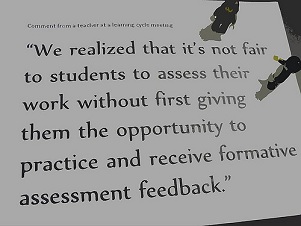Its very important for every teacher to follow learner centric approach
In a learner-centred class, pupils don’t depend on their teacher all the time, be it for instructions, words of approval, corrections, advice, or praises. They look at each other and utilise each other as a valuable resource. They understand the value of each other’s contributions; they cooperate, learn from each other, and help each other. It's not that the teacher is totally redundant when in difficulty or in doubt, they do look at the teacher as a resource but only after they have tried to solve the problem themselves or with all other available resources. The emphasis is on working together, in pairs, in groups, and as a whole class. Their teacher helps them to develop their independent learning skills.

A learner-centered classroom isn’t a place where the learners decide what they want to learn and what they want to do. It’s a place where we consider the needs of the students and encourage them to participate in the learning process all the time. Lesson pace, chunking of concepts, required adaptations (if any) are decided as per learner's need. Even thinking time for any task is decided by learner's ability not for the need completion of course. The teacher’s role is more that of a knowledge facilitator than instructor; the pupils are active participants in the learning process and in decision-making with regard to their independent learning. The teacher and resources help to guide the learner, manage their activities, and direct their learning. Being a teacher means helping pupils to learn rather than to teach. In a learner-centered class, the teacher is a member of the class as an active participant in the learning process.
In a learner-centered class, at different times, students may be working alone, in pairs, or in groups:
-
While preparing ideas or making notes before a discussion pupil may prefer working alone.
-
While comparing and discussing their answers, or reading and reacting to one another’s written work and suggesting improvements they may prefer working together in pairs or groups,
-
Working together in discussions or in role-plays, sharing ideas, opinions, and experiences
-
Interacting with the teacher and the whole class, asking questions or brainstorming ideas
Even in a learner-centered class, pupils may be led by the teacher:
-
Before they work together, their teacher will help them prepare to work together with explanations and instructions.
-
While pupils are working together, their teacher will be available to give advice and encouragement.
-
To give them feedback, offer suggestions and advice, make corrections, and answer questions.
When students are working together in any class, they
-
Talk more
-
Share their ideas
-
Learn from each other
-
Are more involved
-
Feel more secure and less anxious
-
Elaborate their understanding in a meaningful, realistic way
-
Enjoy active participation.

Pankaj is an Academic Manager with NCR Eduservices with more than 10 years of experience in teaching and learning. He is an academic evangelist and blogger.